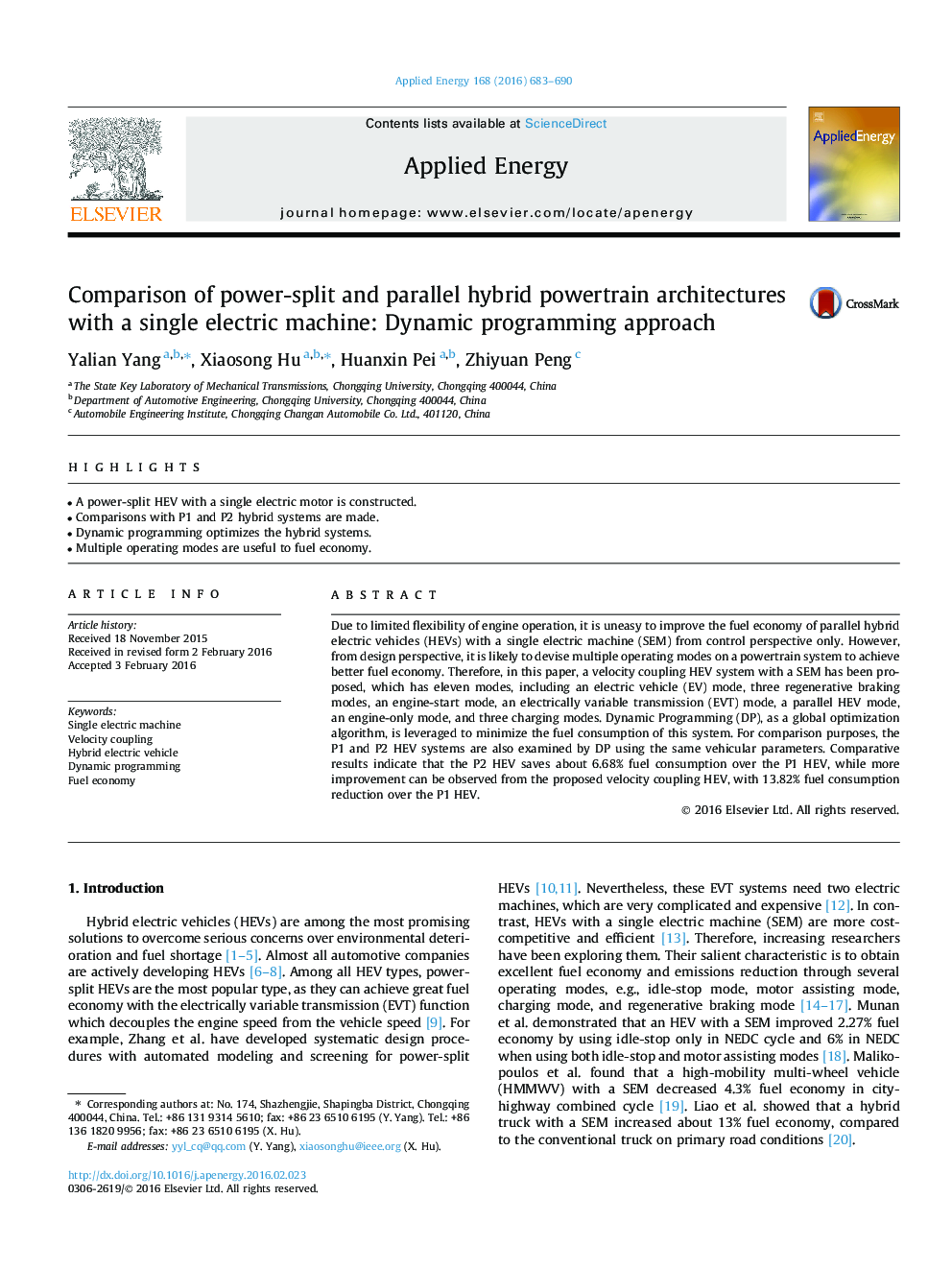| Article ID | Journal | Published Year | Pages | File Type |
|---|---|---|---|---|
| 6683897 | Applied Energy | 2016 | 8 Pages |
Abstract
Due to limited flexibility of engine operation, it is uneasy to improve the fuel economy of parallel hybrid electric vehicles (HEVs) with a single electric machine (SEM) from control perspective only. However, from design perspective, it is likely to devise multiple operating modes on a powertrain system to achieve better fuel economy. Therefore, in this paper, a velocity coupling HEV system with a SEM has been proposed, which has eleven modes, including an electric vehicle (EV) mode, three regenerative braking modes, an engine-start mode, an electrically variable transmission (EVT) mode, a parallel HEV mode, an engine-only mode, and three charging modes. Dynamic Programming (DP), as a global optimization algorithm, is leveraged to minimize the fuel consumption of this system. For comparison purposes, the P1 and P2 HEV systems are also examined by DP using the same vehicular parameters. Comparative results indicate that the P2 HEV saves about 6.68% fuel consumption over the P1 HEV, while more improvement can be observed from the proposed velocity coupling HEV, with 13.82% fuel consumption reduction over the P1 HEV.
Related Topics
Physical Sciences and Engineering
Energy
Energy Engineering and Power Technology
Authors
Yalian Yang, Xiaosong Hu, Huanxin Pei, Zhiyuan Peng,
